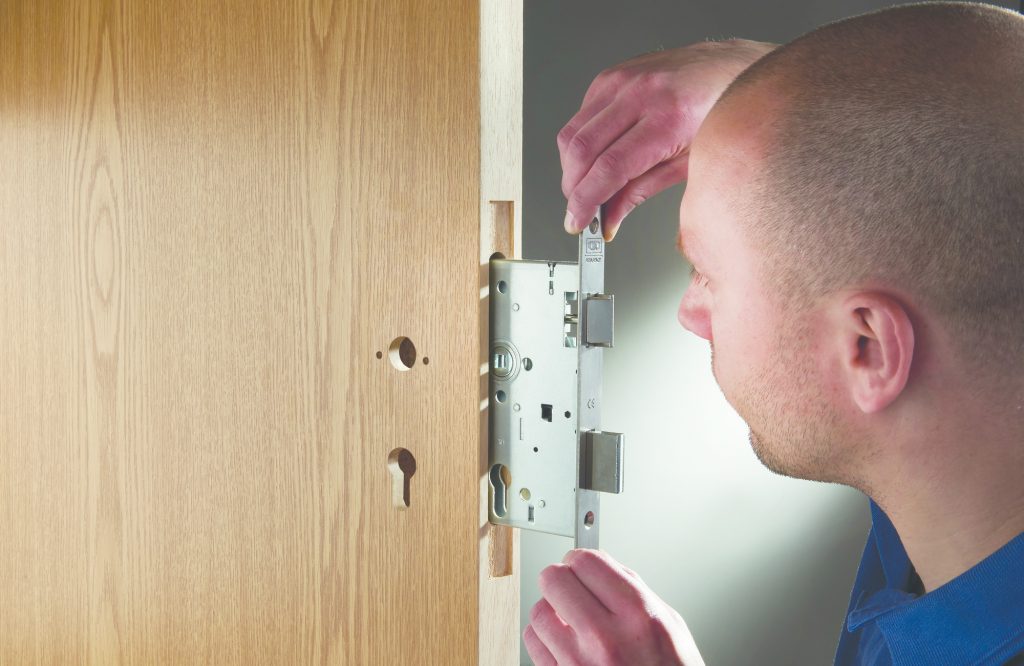Richard Bromley, Business Development Director at UNION, part of the ASSA ABLOY Door Hardware Group, discusses what the new UKCA and UKNI product marking system means for locksmiths and how these updates are affecting door opening solutions.

Now that the transition period following Brexit has officially ended, a new product marking system covering goods that previously required CE marking has come into force in Great Britain. Known as the UKCA mark, it includes products such as fire-resistant and emergency locks, panic exit devices and door closers.
- What is the UKCA mark?
The UKCA (UK Conformity Assessed) marking is the new product marking system that will be used for goods being placed on the market in England, Scotland and Wales. It covers all goods that previously required CE marking, and must be undertaken by a UK-recognised ‘approved body’. An EU notified body, which would previously have been called upon for CE marking, cannot be used for UKCA marking.
- How is Northern Ireland affected?
As with the UKCA mark, a Northern Ireland equivalent – the UKNI mark – came into effect on 1 January 2021.
The Northern Ireland Protocol aims to prevent a hard border between Northern Ireland and the Republic of Ireland by ensuring that the province will continue to follow the EU’s rules on product standards.
Critically, CE marking will continue to be used in Northern Ireland after 1 January 2021, to demonstrate products still meet EU standards. However, if a manufacturer uses a UK approved body – rather than an EU notified body – to carry out mandatory third-party assessments, then products must also carry the new UKNI mark alongside the CE mark.
- What are the key deadlines?
As of 1 January 2021, all new products launched in Great Britain must be UKCA marked, with the CE mark no longer being recognised from 1 January 2022. For existing CE marked products, there will be a ‘coexistence’ period until 31st December 2021, where these goods can continue to be sold in Great Britain until then.
During this timeframe, it is expected that manufacturers will take steps to ensure existing CE marked products will have the UKCA mark applied in time for 1 January 2022, when the CE mark will cease to be recognised in Great Britain.

- Whose responsibility is it?
While it is the hardware manufacturer’s responsibility to ensure their products conform to the standards, it is everyone’s responsibility throughout the supply chain to ensure properly certified and marked products are specified. For instance, hardware covered by an EU harmonised standard being fitted onto a fire door must be appropriately marked. If it does not, then there could be a thorough investigation, plus potentially significant fines and penalties.
Therefore, locksmiths should make sure they have a solid understanding of what the correct product marking entails and the timescales that are being worked towards.
- How is UNION responding?
For Great Britain, UNION is ensuring all new products from the beginning of 2021 will be certified using a UK approved body and have the UKCA mark applied, if they are intended to be used on fire doors or if it’s electro-mechanical hardware. Then, for its range of existing CE marked products, UNION is progressing UKCA marking for these solutions too, ensuring they are properly certified and marked in time for the 1 January 2022 deadline.
In Northern Ireland, for existing door hardware solutions that are CE marked by a UK-based notified body, UNION has transferred certification to or has re-certified products with an EU-based notified body.
Then, all new products sold into Northern Ireland will either be CE marked by an EU-based notified body, or a UK-based approved body will be used to gain UKNI marking, alongside the UK-registered CE mark approval.
And, finally, all relevant documents, such as labels, product packaging, marketing materials and instruction manuals, will be updated. Clearly, this is no small feat, and this will be a rolling change throughout 2021.
As we enter this new chapter in the UK’s history, door hardware manufacturers must ensure their products conform to the new product marking guidelines. At the same time, however, it also falls to locksmiths to make sure that the products they specify and install do the same. Let’s get this right together and ensure a smooth transition for the industry.
